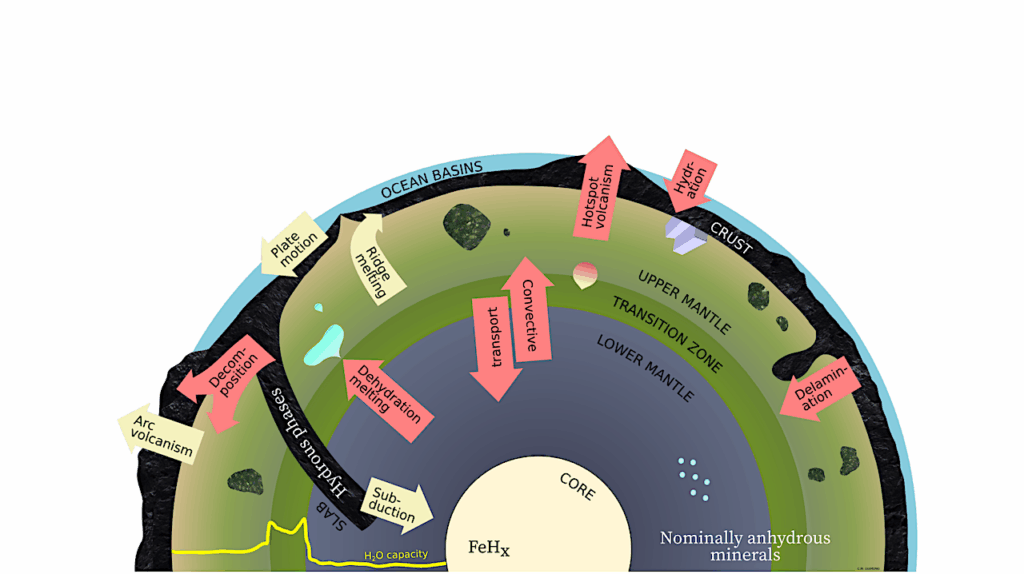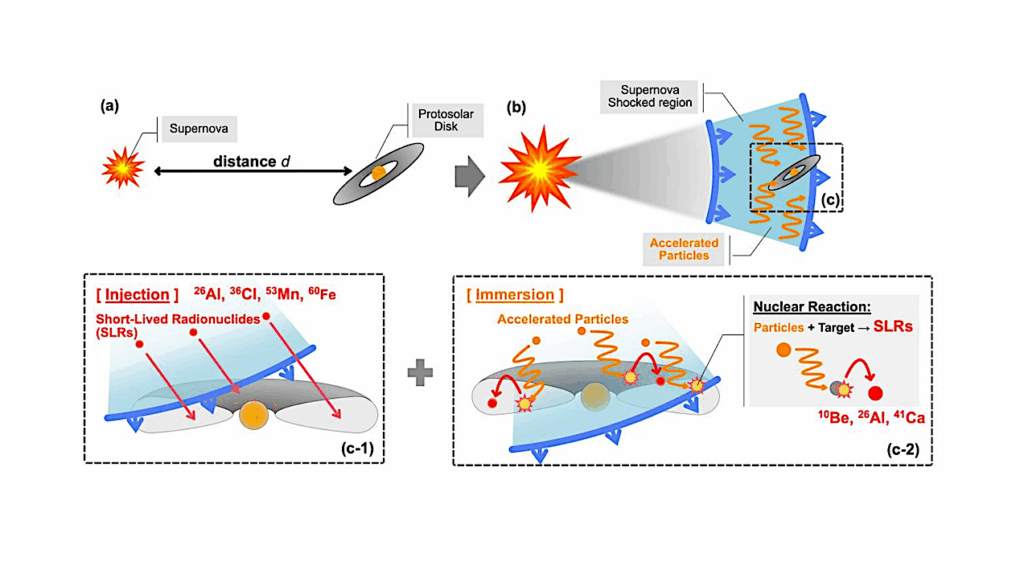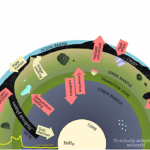Now Reading: Formation And Disruption Of Resonant Chains Of Super-Earths: Secular Perturbations From Outer Eccentric Embryos
-
01
Formation And Disruption Of Resonant Chains Of Super-Earths: Secular Perturbations From Outer Eccentric Embryos
Formation And Disruption Of Resonant Chains Of Super-Earths: Secular Perturbations From Outer Eccentric Embryos
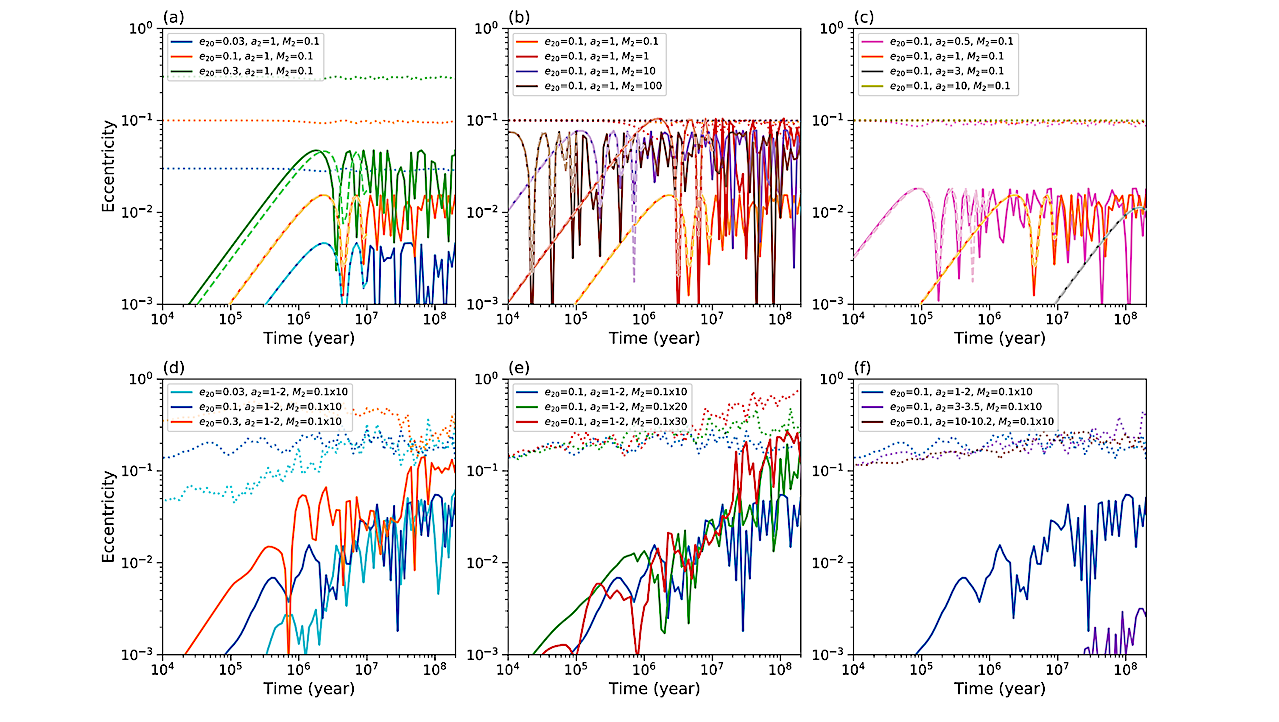
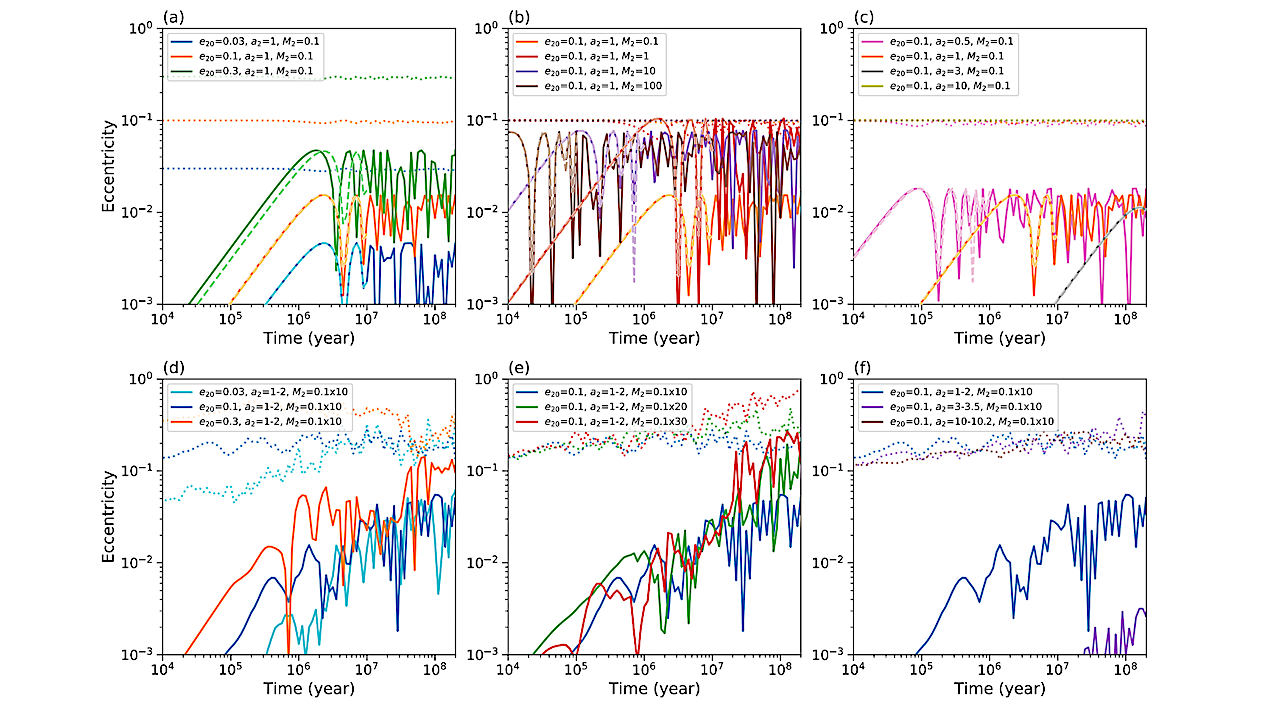
(a)–(c) Time evolution of the eccentricity of an inner super-Earth with a1 = 0.3 au and M1 = 3 M⊕, perturbed by an outer planet with different values of a2, M2, and e20. Solid lines show the simulated eccentricity of the inner super-Earth, dashed lines show the evolution predicted by the analytic expression, and dotted lines show the eccentricity of the outer perturber. The analytic solutions are shown only for the first few oscillation cycles in each case. (d)–(f) Results of N-body simulations with multiple outer perturbers. Solid lines indicate the eccentricity evolution of the inner super-Earth, while dotted lines indicate the maximum eccentricity of the outer perturbers. All panels are plotted with a logarithmic spacing of 0.05 dex intervals.
— astro-ph.EP
Recent observations have revealed the distribution of orbital period ratios of adjacent planets in multiple super-Earth systems and how these distributions change with time.
The aim of this study is to clarify under what conditions the observed features of orbital period ratios of super-Earths can be explained, and to identify what causes the dynamical instability of super-Earths captured into resonant chains.
We perform N-body simulations for 100 Myr that follow the formation and orbital evolution of super-Earths originating from a ring of planetary embryos at 1 au from the star. The simulations show that super-Earths undergo inward migration in the disk and are captured into mean-motion resonances with their neighbors. As a result, several resonant pairs form a resonant chain.
After disk dispersal, some of these chains become dynamically unstable. In such cases, the final distribution of orbital period ratios and their time evolution can be consistent with recent observations. The instabilities of resonant chains are likely triggered by secular perturbations from embryos that remain on outer orbits beyond 1 au, indicating that not only giant planets but also small embryos can disrupt the resonances among inner super-Earths.
We therefore further investigate the secular perturbations from outer embryos using analytic formulas and additional orbital calculations. We discuss the conditions required to excite the eccentricities of inner super-Earths on a timescale of about 100 Myr. These conditions include the need for large eccentricities of the outer embryos, as well as constraints on their masses and semimajor axes.
Masahiro Ogihara, Masanobu Kunitomo
Comments: 15 pages, 8 figures, accepted for publication in ApJ
Subjects: Earth and Planetary Astrophysics (astro-ph.EP)
Cite as: arXiv:2511.11328 [astro-ph.EP] (or arXiv:2511.11328v1 [astro-ph.EP] for this version)
https://doi.org/10.48550/arXiv.2511.11328
Focus to learn more
Submission history
From: Masahiro Ogihara
[v1] Fri, 14 Nov 2025 14:02:02 UTC (1,364 KB)
https://arxiv.org/abs/2511.11328
Astrobiology,
Stay Informed With the Latest & Most Important News
Previous Post
Next Post
-
 012024 in Review: Highlights from NASA in Silicon Valley
012024 in Review: Highlights from NASA in Silicon Valley -
 02Panasonic Leica Summilux DG 15mm f/1.7 ASPH review
02Panasonic Leica Summilux DG 15mm f/1.7 ASPH review -
 03From Polymerization-Enabled Folding and Assembly to Chemical Evolution: Key Processes for Emergence of Functional Polymers in the Origin of Life
03From Polymerization-Enabled Folding and Assembly to Chemical Evolution: Key Processes for Emergence of Functional Polymers in the Origin of Life -
 04How New NASA, India Earth Satellite NISAR Will See Earth
04How New NASA, India Earth Satellite NISAR Will See Earth -
 05And Thus Begins A New Year For Life On Earth
05And Thus Begins A New Year For Life On Earth -
 06Astronomy Activation Ambassadors: A New Era
06Astronomy Activation Ambassadors: A New Era -
07SpaceX launch surge helps set new global launch record in 2024













